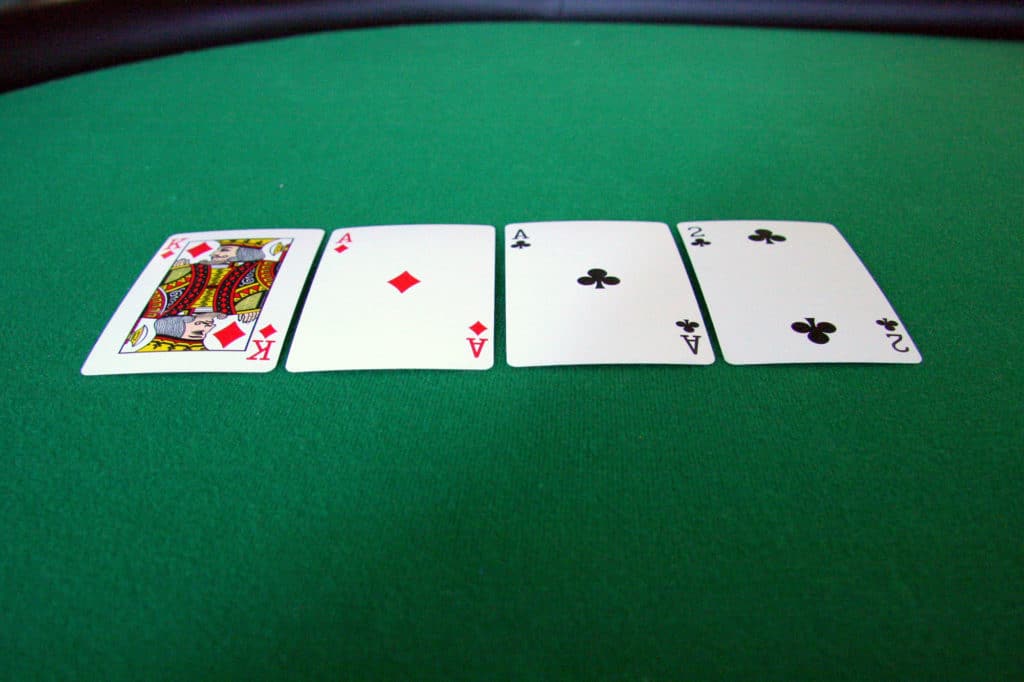
Understanding your opponent's rank is one of the most important aspects of a profitable poker game. The concept is very simple, but if played blindly and without any learning strategies, it can take many hands to develop an understanding of range. Combining theory and practical experience can achieve the same results much faster than practice alone.
The simplest initial rule for correct thinking about rank can be described as follows: each opponent's reaction describes his possible rank. The reaction in this case can be anything - check, call, raise. Of course, during the game it can be a bit tricky to think about your opponent's range after absolutely every action, but this is the easiest way to train and automate your thinking.
Before you start any discussion about your opponent's possible hands, you should first take into account the characteristics of the limit you are playing. At low limits, inferior players will tend to overcall both value and draw hands, sometimes floating random Axes and low pairs. At higher limits, the game becomes much more complex, as the players' ranges will be more balanced, with less random floating and so on. In this article, we will discuss the thinking that is more appropriate for the lower limits, where players will play more of an ABC poker strategy.
Flop: On the flop, we will know at least the potential range of the opponent (except in 3bet situations). Depending on the value available, the texture of the board and the bet sizing chosen for the turn, the range can change dramatically. Before choosing a bet size (or checking), we need to take into account the opponent's preflop range and the number of cards potentially hitting it.
Turn: After receiving a call betting flop, we can draw a few conclusions:
- Opponent has a pair (or pocket pair)
- Your opponent must draw.
- The board was good for floating stronger hands.
Remembering your opponent's preflop range allows you to mentally "cross out" hands that call very rarely. For example:
If the opponent's ranges are ones that do not connect to the board in any way, we can exclude them from his potential calling range (T6o, Q4o). Lower limit players will usually only call pairs on very dry boards, so if a call is made on such a flop, regardless of any sizing, we can assume that the opponent has either a pair or pockets. At higher limits, players can float such boards a little wider. The turn cards will rarely make any difference to the players' equity, as almost all the cards in the deck will have little association with the three flop cards. Therefore, before choosing a bet/check on the turn, we need to think about how many of our opponent's hands we will be able to discard (that are ahead of us), and how many of our opponent's hands we will get value from (and how many of their hands we are ahead of).
Conversely, if the flop was like this:
On such boards, we will often get a lot more calls from all kinds of draws (QJ, J9, etc.). These boards will have a much wider calling range, so they are less likely to be suitable for one street betting (as the fold frequency will be much lower). Turn cards on these flops will often be very important - Qx, 9x will close a lot of draws, but a card like 3 will almost always make no difference. Before choosing to check/bet in tournaments on these textured boards, you need to think about how the turn card has potentially strengthened your opponent's range. In most cases, a strong flopped turn will increase the opponent's potential equity, while a brick'ai will improve the situation for those with stronger couples.
River: The River is usually the most difficult street for newcomers. Very rarely will the turn and river cards be completely unchanged from the flop, so you will need to think carefully about the possible solutions. Fortunately, at lower limits, opponents' river check/raise as a bluff lines will be much rarer than they should be, which makes it easier to choose a bet/fold line.
Presence on the Riviera in position provides a very important strategic aspect, as the opponent's rank-strengthening cards will allow us to check. The same thinking can be applied to the river as in the tournament - how does this card change the strength of the opponent's range? For example, if the river has produced a lot of flop/turn draws for the opponent, we will be more likely to want to check our pairs. If the flop and turn were dry and the river made no difference, we will be more likely to want to bet our own pairs (if they are mostly ahead of our opponent's pairs).
The most important thing to remember is that the opponent's range continually narrows as you approach the river. On the turn, players are more likely to run very weak draws, low pairs and flopped hands. When the river comes, the opponent's range will usually be limited to strong draws and higher pairs (depending on the kicker).





